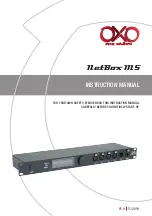
RAD-Galaxy User’s Guide
12
© 2016 Intrepid Control Systems, Inc.
Version 1.2 - November 28, 2017
•
1 LIN channel (coming soon).
•
4 PWM / Analog Input and 3 Analog Output channels (coming soon).
PC Interface and SD Card Support
•
All data communicated to the PC over standard Gigabit Ethernet connection.
•
Support for removable, full-sized SD cards up to 128 GB in size.
•
Download speeds of up to 3.2 MB/s.
•
SD card protection cover.
•
Firmware-based SD card presence and card door detector.
Standalone Logging Support
•
Capable of fully independent operation within a vehicle.
•
Log Automotive Ethernet at a rate up to 150 Mb/s, using filters to avoid capturing high-
bandwidth or unwanted traffic.
•
Logged data quantity limited only by the size of the installed SD card.
1.6 Hardware and Software Requirements
You will need a small amount of support hardware to make use of your RAD-Galaxy:
•
A vehicle network, either within an actual vehicle or in a test bench environment.
•
A DC power supply capable of providing 5V to 40V of DC power, with a nominal current
of 1.5A at 12V. Your network setup must include wiring capable of providing this power
on pin 25 of a female DB-25 connector; see Chapter 6 for pinout details.
•
A PC with an available Gigabit Ethernet port. Note that backward compatibility to slower
Ethernet ports is supported, but 100 Mb/s Ethernet does not provide sufficient capacity
for transmitting and receiving high-speed BroadR-Reach traffic on multiple links.
•
Cables and/or connectors to connect to the BroadR-Reach nodes in your Automotive
Ethernet network.
•
A crimping tool to attach wires to the provided crimp contacts and secure them within
the Nano MQS plug housings. See Chapter 3 for more details.
Additional cables may also be needed, depending on the nature of the network to which the
RAD-Galaxy is being connected.
















































